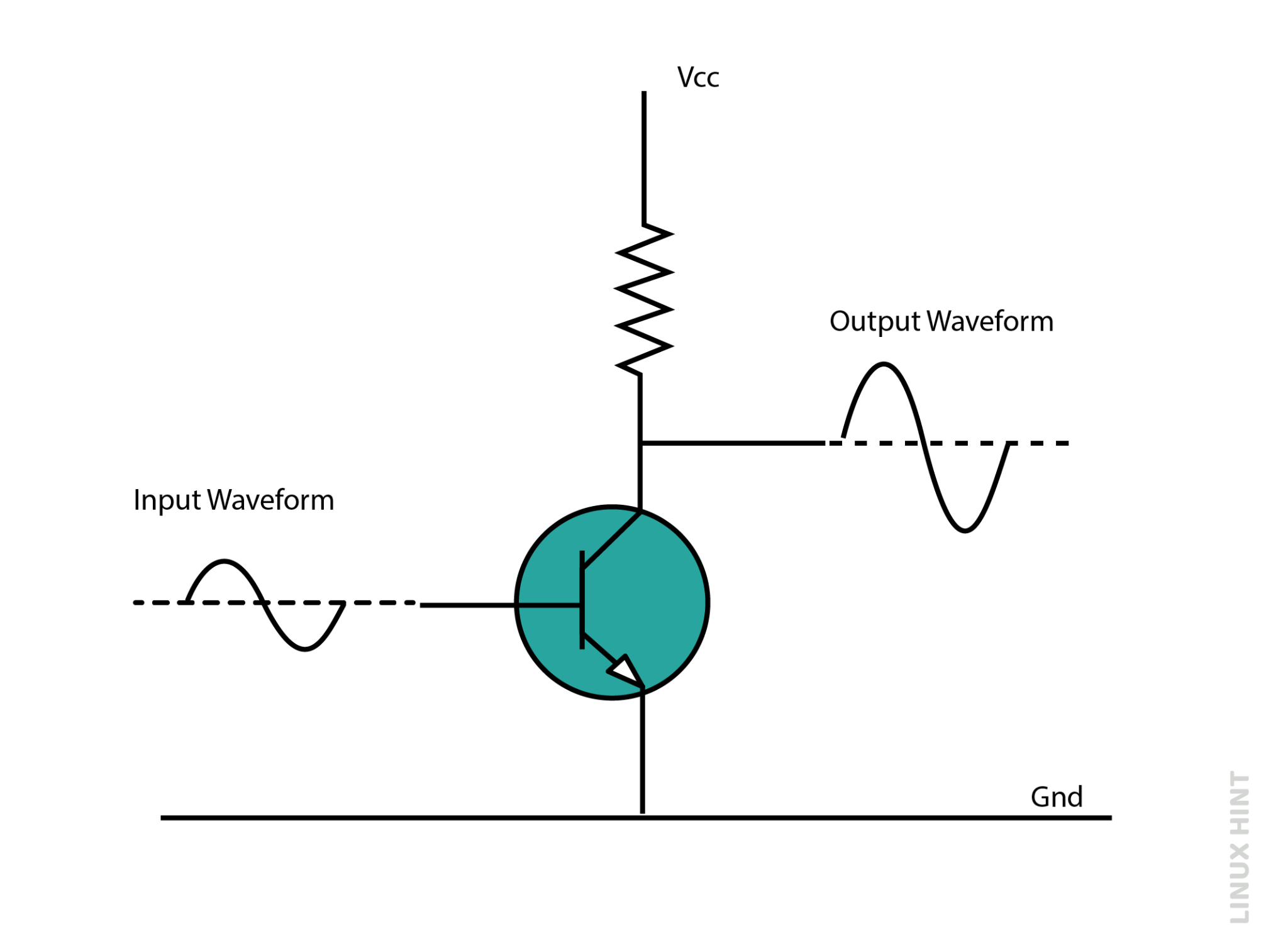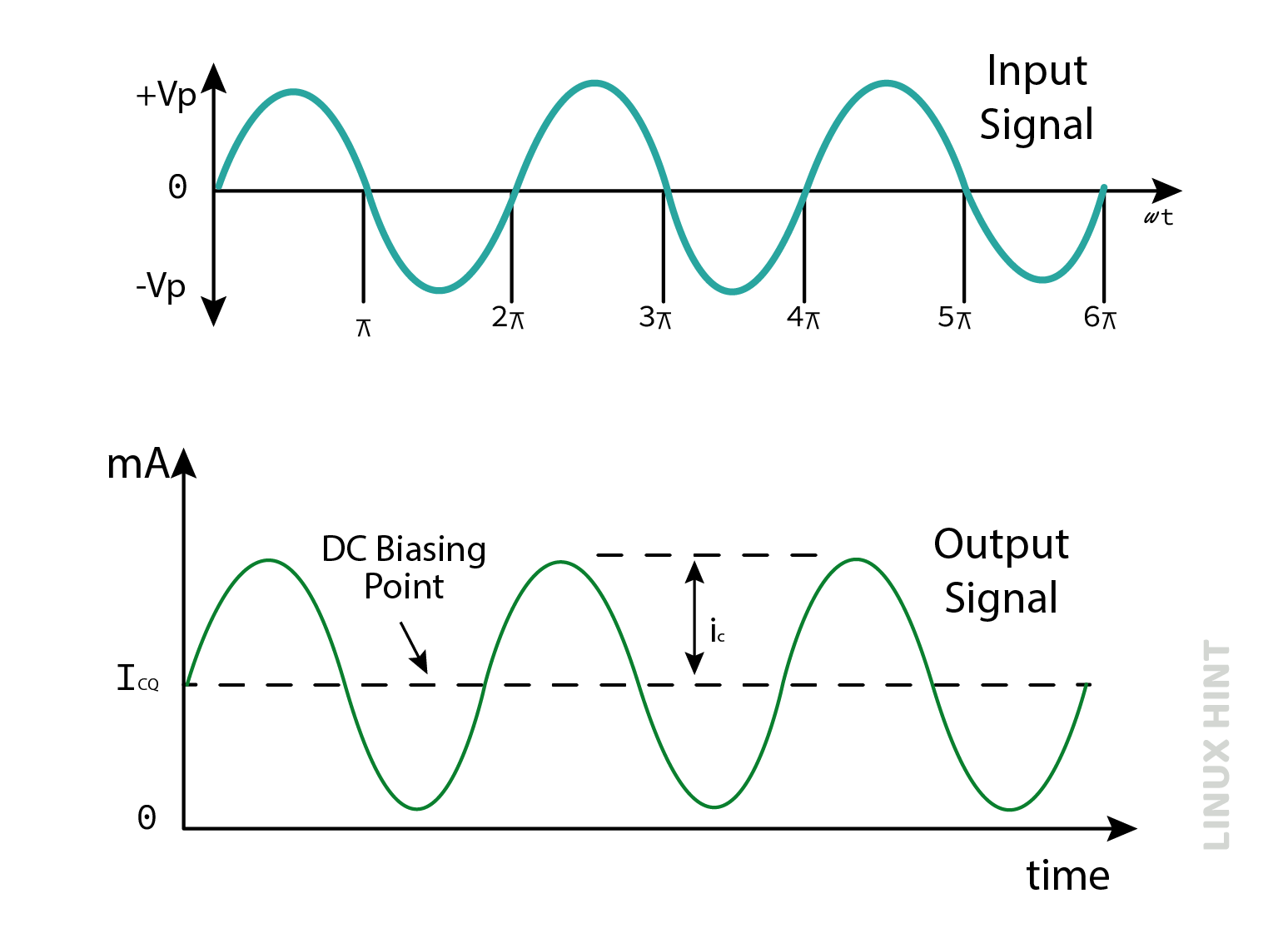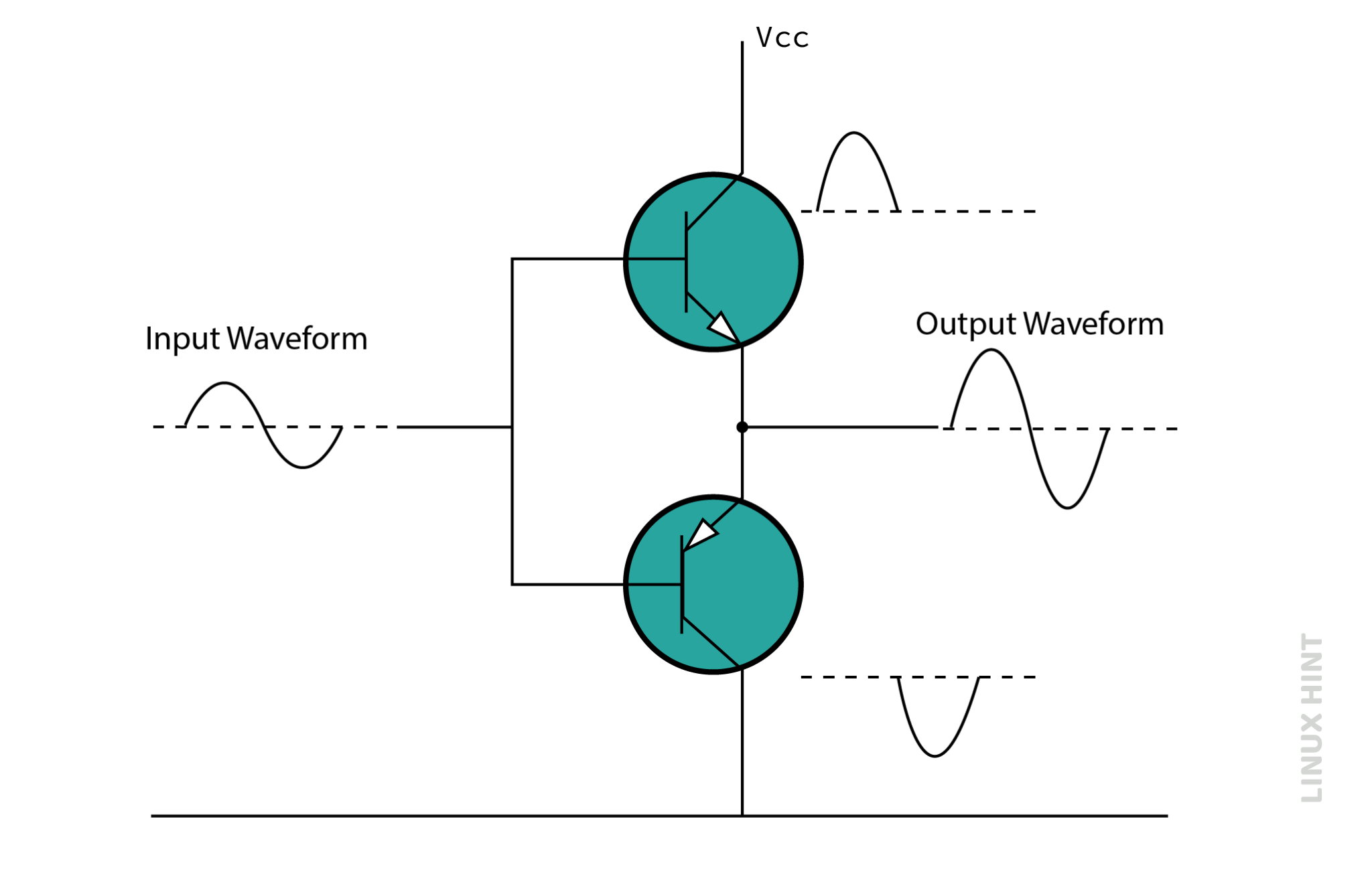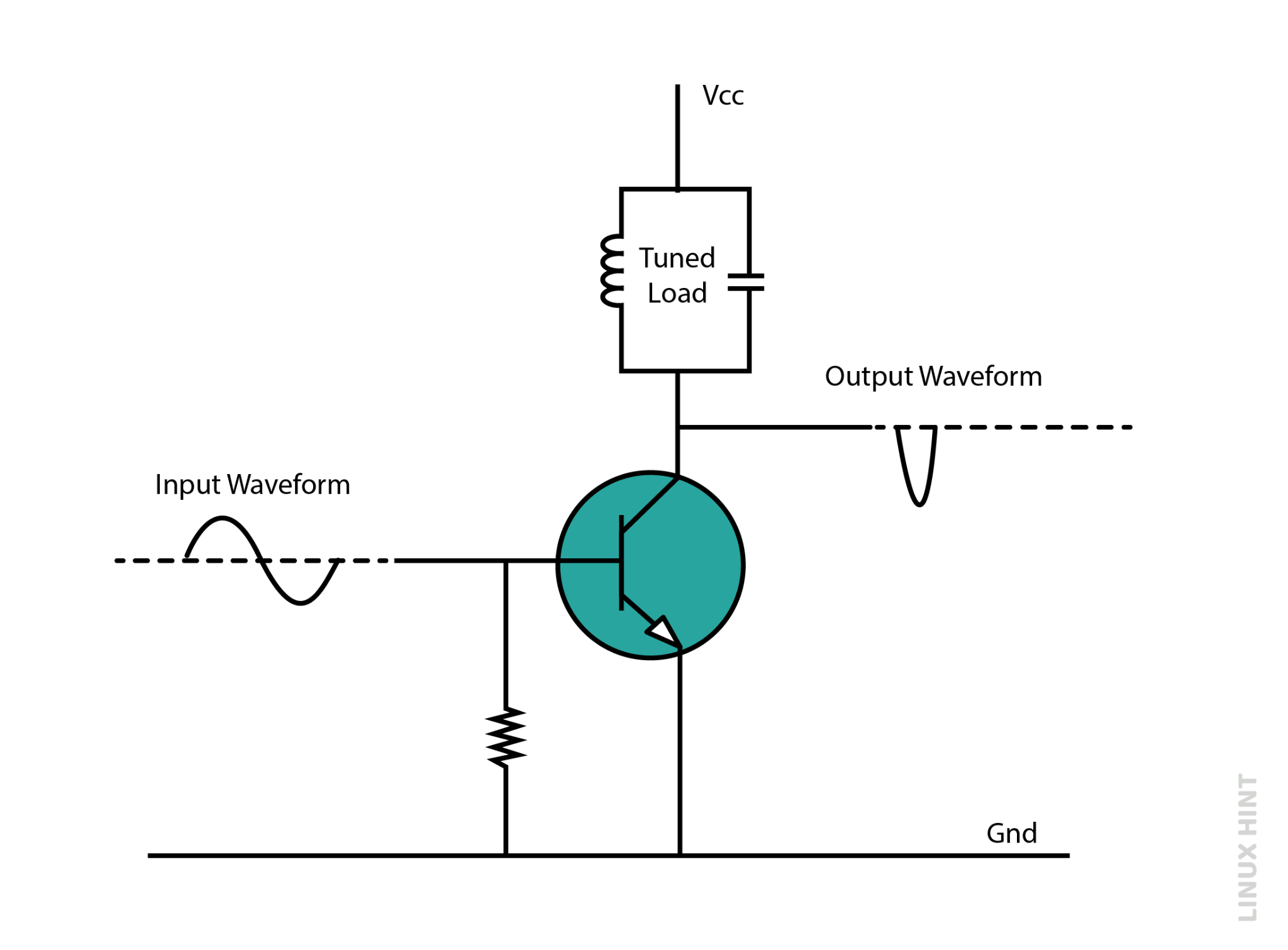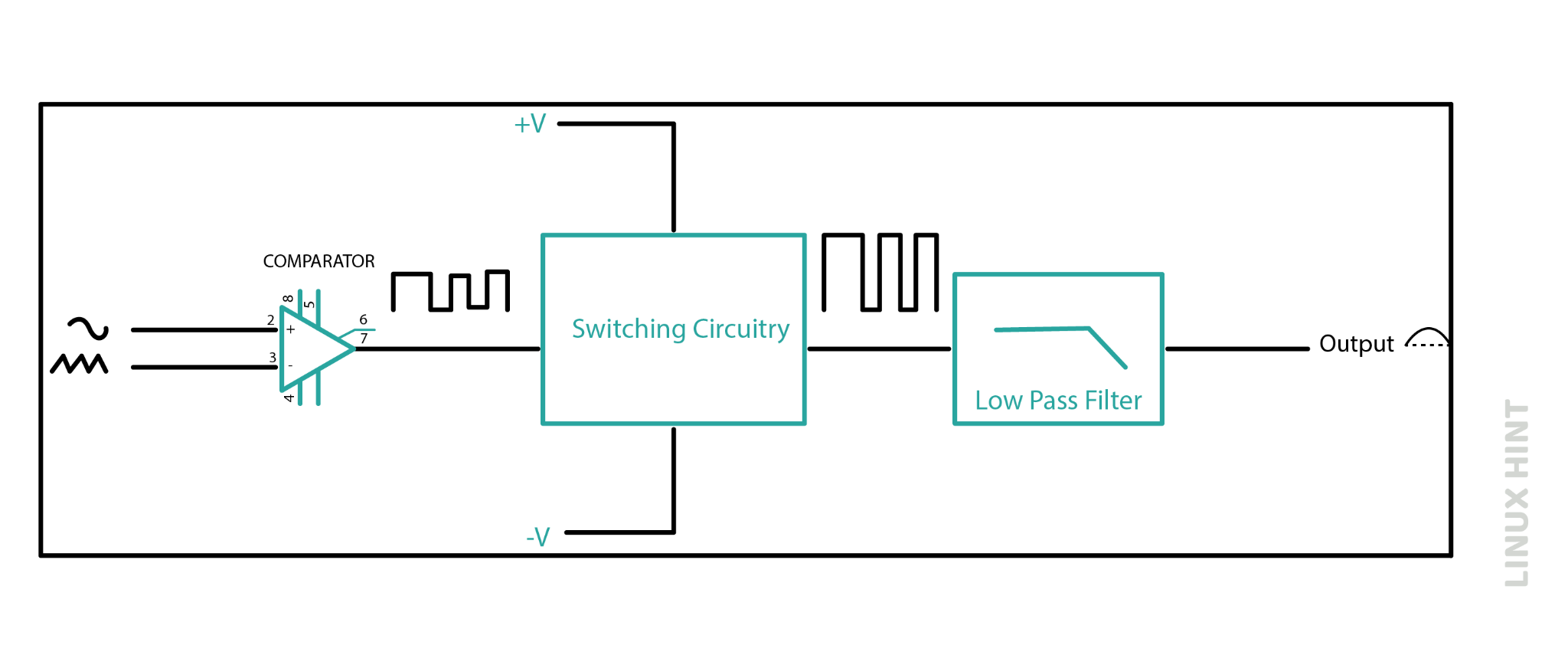Amplifier
An amplifier strengthens any weak signal at its input and converts it into its equivalent amplified version at the output. The amplified output signals are strong enough to be used in any kind of applications like transmitters and audio mixers. They are part of almost every electronic digital circuit.
Amplifier Classifications
Amplifiers can be classified in a variety of ways. The standard criteria for classification of amplifiers is type of signal, type of configuration and frequency of operation. The below table summarizes different types of amplifiers:
| Classification Basis | Signal Types | Configuration Types | Operational Frequency Types | Output Types |
|---|---|---|---|---|
| Types | Small Signal | Common Emitter | Direct Current | Voltage Amplifiers |
| Large Signal | Common Base | Audio Frequencies | Current Amplifiers | |
| Common Collector | Radio Frequencies | Power Amplifiers | ||
| VHF, UHF & SHF Frequencies |
The most widely used output types of amplifiers are described below.
Classification on Basis of Output
An amplifier can be used to amplify current, voltage and power of input signal. Based upon their working principles, they are named as voltage amplifiers, power amplifiers and current amplifiers. Voltage amplifiers provide amplified voltage versions while current amplifiers provide amplified current versions at output. Similarly, power amplifies work on principles of power amplifications. All the amplifiers need input signals to reach a certain level above threshold to process their amplification. Pre-amplifiers are used before power amplifiers to ensure that signal is above a threshold level as shown below:
Power amplifiers are subdivided into class A, B, AB, C and D / E.
Power Amplifiers
Power amplifiers can be developed in different ways. With each different configuration, the amplification durations and conduction angles of every power amplifier becomes different. To classify power amplifiers, they are named after different alphabets.
Those who amplify only analog signals fall into categories of A, B, AB and C. Those who amplify pulse width modulated waves fall into categories of D, E, F and so on.
Class- A Power Amplifier
Class A amplifiers conduct the entire input signal. It means that its conduction angle is a complete whole cycle of analog input or 360 degrees. The construction of Class A amplifier is shown below:
The single NPN transistor T1 is provided with an input signal at its base. As the base receives a signal, it transmits the output. The capacitor at output amplifies the output for the entire duration of input cycle.
The only limitation is this type of arrangement is power losses and low efficiency due to heat and distortions in the signals. This configuration requires heat sinks to reduce heat levels in the circuit. The efficiency is not more than 50% with modifications and addition of inductive elements in circuit.
Class- B Power Amplifier
This amplifier configuration makes use of two different transistors in the circuit. Each transistor conducts for half of the entire input cycle, or 180 degrees of input cycle as shown below:
The NPN transistor T1 is activated for a positive half cycle while the PNP transistor behaves as an open switch. Similarly, PNP transistor T2 is activated for the negative half cycle while NPN transistor behaves as an open switch. The contributing half wave outputs from two transistors make up the complete entire cycle at the output.
This arrangement divides the load between two transistors and efficiency rises to 60%. The limitations come on aspects of crossover between the two transistors. As soon the first transistor turns off, the second transistor shall also be active to conduct the second half at the same amplitude. But there is an intermediate state called crossover when both transistors are off. This results in delay between two outputs and distortion at output.
Class- AB Power Amplifier
Class AB amplifiers mitigate the crossover problem and noises found in Class A & B amplifiers. It has the same configuration of Class B amplifiers but with addition of two diodes in between the two transistors as shown below:
The two transistors operated in the two half cycles but now they are biased through diodes. The biasing arrangement keeps transistors on for some time in the next half cycle as well. This removes any possibility of complete dead states or cross over states between the conduction of two transistors. Resultantly, a smooth output is obtained without any mismatch at output.
Class- C Power Amplifier
The Class C Power amplifier works differently from all other amplifiers. It makes use of tuning the required frequencies at the output. The efficiency rises to almost 80% in this configuration. For tuning arrangement, these amplifiers add a tuned load in their configuration as shown below.
The tuned load is designed to pass frequencies above the threshold level while blocking all other frequencies at the output. Class C amplifiers can also be made to work without tuning loads, and they operate just like Class A amplifiers with a single transistor. The conduction angles in these configurations are below 90 degrees.
Class- D Power Amplifier
Class D power amplifiers are the most efficient power amplifiers among all other types. They employ pulse width modulation signals instead of analog signals at input. The analog signals are operated with modulation techniques to produce PWM signals. After the amplification and switching process, the signals are filtered through loss pass filters before reaching the output. It has the least heat losses and employs MOSFETs switches in its configuration.
Additional Amplifier Classes
Apart from the above standard classes of power amplifiers, there are a few others with their own customized designs. Some of them include Classes E, F, G and H.
Class E uses advanced switching configurations along with tuned load networks. Class F employs a high impedance design for blocking frequency fluctuations and increasing gain of the network. Similarly, Class H employs a specialized arrangement for switching transistors known as rail switching configuration.
Tabular Summary
The below table summarizes all the above power amplifier classes and their conduction angles for a quick understanding of their major characteristics:
| Class of Amplifier | Conduction Angle | Efficiencies |
|---|---|---|
| A | 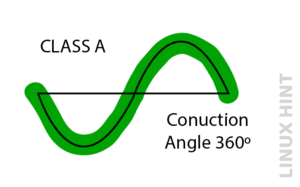 |
25% to 30% |
| B | 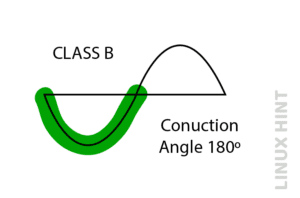 |
70% to 80% |
| AB | 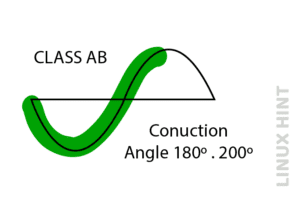 |
50% to 70% |
| C | 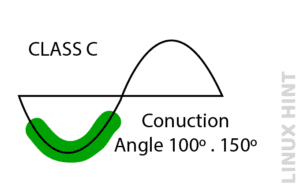 |
Above 80% |
| D/T | Does not have conduction ranges but simple ON-OFF switches with customized switching techniques. | Above 90% |
Conclusion
Power amplifiers are used in digital electronic circuits to amplify and conduct input signals as per their designed conduction angles for different purposes. The efficiencies range from 25% to 80% in different amplifier classes, and each arrangement has its own pros and cons.


